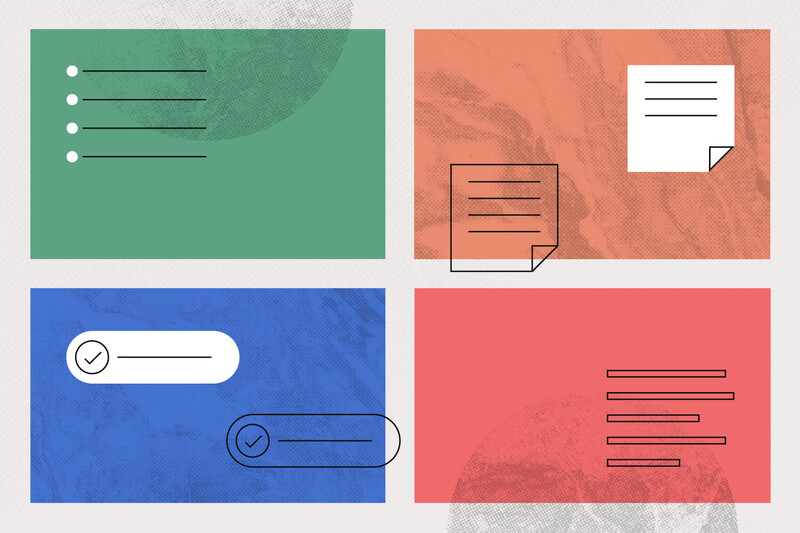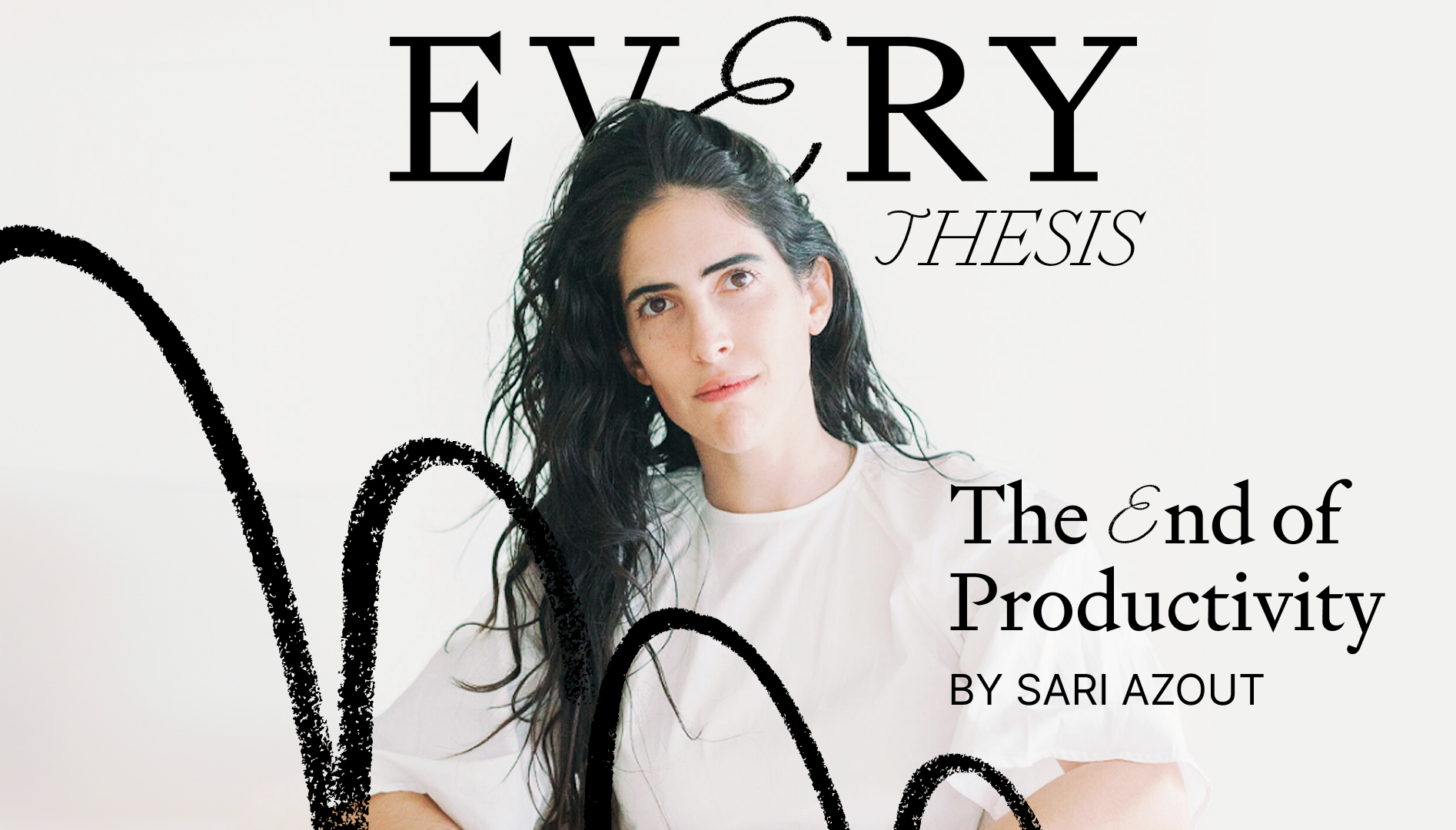- Links for Thinks
- Posts
- 🔗 🧠 Links for Thinks #8: On Being Productive
🔗 🧠 Links for Thinks #8: On Being Productive
Productivity, Knowledge Management, Psychology, Philosophy

Five resources every week with actionable takeaways to make you a better designer.
We're on the home stretch folks. The week before the last holiday season of the year in the US. Which means we have to muster up all of our productivity hacks to make sure we get our stuff out the door—all while prepping for our future selves to not hate our past selves when we jump back in at the start of 2025.
No better way to feel productive than to read about productivity—so let me help you indulge with some links to really hit your organizational dopamine receptors. Consider this your permission to procrastinate… productively.
— Jake
TODAY'S EDITION

NOT EVERYTHING IS A FIRE
Feeling overwhelmed by your increasingly large to-do list where everything seems like a priority? Well maybe it’s time to take that step back, a deep breath, and come to terms that not everything needs to be done right this second. Before he was dealing with actual nuclear threats as president, Eisenhower figured out something we all need to hear—most urgent things aren't important, and most important things aren't urgent.
THE JUICE
Important ≠ Urgent: That client crisis blowing up your Slack? Urgent. The strategy planning you keep pushing off? Important. Learn the difference and suddenly your day stops feeling like one long game of whack-a-mole.
The Matrix Cheat Sheet: Four boxes that'll make your to-do list actually manageable:
Do: Both urgent and important. Your "the-house-is-on-fire" kinda stuff, handle these now.
Schedule: Important but not urgent. Your "future-you-will-thank-you" stuff. Plan these properly.
Delegate: Urgent but not important. Perfect for passing to your teammates like a hot potato.
Delete: Neither urgent nor important. Your productivity kryptonite. Just say no.
Work Smarter, Not Harder: Make sure your matrix doesn’t just turn into another overwhelming to-do list. Keep it lean by:
Capping each quadrant at 10 tasks (your brain will thank you).
Splitting personal and work stuff into different matrices (because your dentist appointment and client deadline need different energy).
Deleting what you don't need first (fun fact: 60% of work time is just "work about work").
Color code if you're feeling fancy, but don't let picking the perfect shade become another task to procrastinate on.

GET YOUR HEAD OUT OF YOUR HEAD
Constantly losing ideas, forgetting about meetings, and leaving important stuff buried under a pile of mental sticky notes? Your brain is great at having ideas but terrible at remembering them—like that one friend who always has amazing plans but can't remember where they put their keys (I’m not that friend, promise).
THE JUICE
The Five Steps of Getting Your Stuff Together:
Capture: Write down everything (and I mean everything) that's bouncing around in your head.
Clarify: What does each thing you captured actually mean (turning "website update" into "update pricing page with new enterprise tier details").
Organize: Create a system you'll actually use (not just another abandoned Notion template).
Review: Regularly check in so you actually trust your system.
Engage: Well, you gotta actually do the things instead of just staring at them anxiously.
Two-Minute Rule: If something takes less than two minutes, just do the dang thing—it’s not worth the brain space or the paper space.
Context, Context, Context: Wherever your system lives, tag tasks by the headspace they need (quick-fixes, creative-flow, deep-focus)—because trying to redesign an entire design system when you've only got 15 minutes between meetings is just setting yourself up for pain. Match your tasks to your mental bandwidth.

STOP REINVENTING THE WHEEL (SERIOUSLY, STOP IT)
The most productive makers of stuff aren't waiting for divine intervention—they're building treasure maps to their best ideas. A swipe file is simply a collection of things you’ve found in the world to use as inspiration. But swipe files aren't just spots full of cool stuff (though they should at least be that)—they're your personal productivity hack for never starting from zero.
THE JUICE
See Something Save Something: The best time to capture inspiration is when you first see it. Build a system so frictionless that saving inspiration takes less time than deciding where to get lunch (unless you’re the type of person where deciding on lunch is impossible, then maybe find a different analogy). Your future self will high-five you when you’re trying to start a new project but don’t know where to look first.
The Dreaded Blank Canvas: Every time you start from scratch, you're burning creative energy on decisions you've probably already made before. Having a curated collection of proven solutions isn't cheating—it's just good resource management.
The Decision Library: Build your swipe file like a design system—not just random cool stuff, but solutions to problems you keep running into. Navigation patterns that work? Save 'em. Error states that don't suck? Keep those too. Color combos that pop? You know someone’s going to ask you about it—might as well be ready.
Searching for Treasure: Wherever your swipe file system lives, make sure you build it in a way that is searchable to you. The more you collect, the more you have to sift through—so make sure you can find what you’re looking for quickly otherwise you won’t want to use it.

PERFECTION IS KILLING YOUR PRODUCTIVITY
20px padding on the top and bottom. Wait no, no—actually 16px is better. WAIT LET ME WORK ON IT JUST A LITTLE MORE. If this sounds like the talk track in your brain for every UI decision, it’s time to have an intervention about perfectionism. Not the "I'm just detail-oriented" kind—the paralyzing "I've been sitting on this draft for three weeks and nothing has actually changed" kind that's actually sabotaging your productivity.
THE JUICE
The Creative's Curse: Turns out perfectionists and creatives share a curse: the curse of a vivid imagination. When you can perfectly picture how something should look, every tiny gap between vision and reality feels like a personal failure. No wonder we keep tweaking those pixels—we're not just adjusting padding, we're adjusting our self-worth.
Iteration Over Perfection: Sure, those pixel-perfect details feel important (and maybe they are), but sometimes you need to embrace the messy middle—make mistakes, learn from feedback, and actually ship stuff. Your early work won't be a masterpiece, and that's exactly the point.
Check Yourself Before You Wreck Yourself: When you're constantly staying up past midnight adjusting button shadows or your friends are glazing over at your 20th deep dive into kerning, it's time for some boundaries. Ask yourself—what are you actually trying to achieve here? Your pixel-perfect design won't matter if you've lost all perspective and friends in the process.
Liberation Through Letting Go: Maybe your perfectionism isn't actually about the work—it's about proving something to yourself (or that one art professor who said “maybe choose a different major,” which I’m totally not speaking from personal experience)… But letting go isn't giving up, it's making space for better things. Like sleep. Or relationships. Or maybe even enjoying the process instead of obsessing over every detail. Sometimes letting go is exactly what makes the work better.
Be A Human: As we trend towards a world full of AI-perfect visuals and writing, maybe flaws are actually the secret sauce. When everyone else is smoothing out their edges, your human touches and happy accidents might be exactly what makes your work stand out.
Powerfully Perfect: Perfectionism can be a productivity killer—but if you learn to control it, maybe it can turn out to be a superpower. Save that obsessive attention to detail for the crucial moments that actually matter.

PRODUCTIVITY IS DEAD, LONG LIVE CREATIVITY
Well now that we spent time going over tools and frameworks to boost productivity. What if I told you maybe we've been thinking about productivity all wrong? What if the future of being more productive is actually about being more creative?
While we're over here optimizing our to-do lists and trying to squeeze more tasks into smaller time blocks, maybe we're missing the whole point of why we’re doing this stuff to begin with.
What sort of modern take on a topic would this be if I didn't talk about AI. In our emerging AI world where machines can crank out content faster than your coffee maker can make your next cup of focus juice, speed and efficiency might not be the flex we think they are anymore.
THE JUICE
Not All Info Is Created Equal: There are generally two types of information we save, and how we handle the storage of that stuff should probably be different based on how we execute upon it:
Admin Info: The boring but necessary stuff (like your dentist appointment details).
Creative Info: Actually interesting creative sparks (like that random idea you got from listening to a podcast).
Creatively Processing: Making cool stuff happens in three steps:
Collecting: Gathering ideas (can happen passively or intentionally)
Connecting: Drawing lines between said ideas
Creating: Actually making something new
AI Plot Twist: Now that AI can generate infinite mediocre content, why should humans keep doing so? Maybe our job isn't to compete on speed or volume. Our superpower is making things that are weird, wonderful, and authentically human—the stuff no computer could fake. Not yet, at least.
Beyond the Checkbox: The most valuable work often doesn't fit in a task manager. There's no JIRA ticket for "stare at wall until breakthrough happens" or "have random insight in shower." Although I might try to introduce this for next sprint planning 🤔. Sometimes the least productive-looking moments are actually where the real work happens.
Tools Are Not Neutral: The tools we use shape how we think. When every app is screaming "faster, more efficient!" we start treating our brains like machines instead of the weird idea factories they really are. Maybe it's time for tools that encourage wandering instead of just executing. Maybe it’s time to find our inspiration and productivity away from our screens.
THANKS FOR READING—SEE YOU NEXT WEEK
In the meantime, feel free to:
Forward this email or share this link with your friends if you feel they need some links for thinks: https://www.linksforthinks.com/subscribe
Reach out with any suggestions or questions for the newsletter.
Send me some of your favorite links and takeaways.
Cheers, Jake



